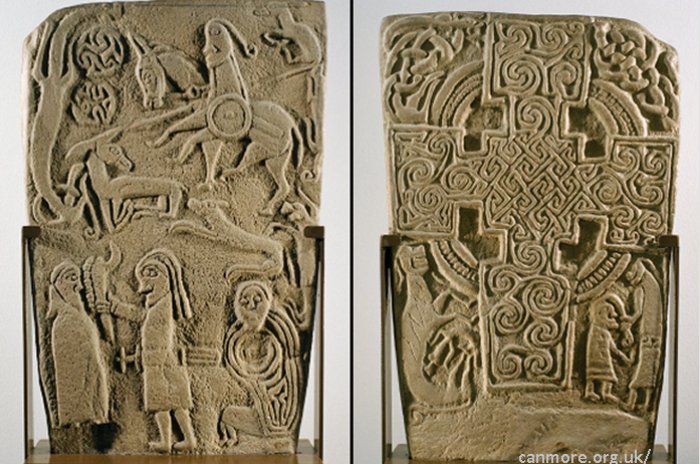Inchbrayock Stone: Pictish Samson Stone Carved With Biblical Symbols And Scenes
A. Sutherland - AncientPages.com - The Inchbrayock stone, also known as the Samson stone is a remarkable and truly fascinating ancient artifact.
Found in 1849, in the graveyard of St Braoch's Church, Inchbraoch, Montrose, Scotland the Pictish stone is carved with Biblical symbols and scenes. There are also several important Celtic symbols.
The stone combines Celtic and Christian beliefs. The Picts were an Iron Age society that existed in Scotland from ca AD 300–843. Not much is known about the mysterious Picts and yet, they played a vital role in the history of Scotland.
These brave and determined people repelled the conquests of both Romans and Angles and won one of the most important battles in Scottish history.
Other than a copy of the Picts’ King list, they left no written record of themselves. The Picts used mysterious symbols that still haven’t been properly deciphered and their enigmatic language is now extinct. The carved stones the Picts left behind are today known as ‘Pictish Symbol Stones’.
One of them is the Inchbrayock Stone. The reason why it is also called Samson stone is because the stone depicts the biblical character Samson, as well Delilah. The stone is carved on both sides. The front is carved in a Celtic cross with intertwined beasts at the top.
The carvings depict two confronting figures. One of them is tall with a beast’s head. The person appears to be yanking the overlong hair of the smaller figure. Some have interpreted it as scene showing Delilah cutting off Samsons hair.
Both figures are wearing tunics, that of the smaller figure with a decorative hem and that of the taller figure with a belt decorated with key pattern. There is also a crocodile-like creature with an elongated body and back leg entwined together and two interlaced serpents.
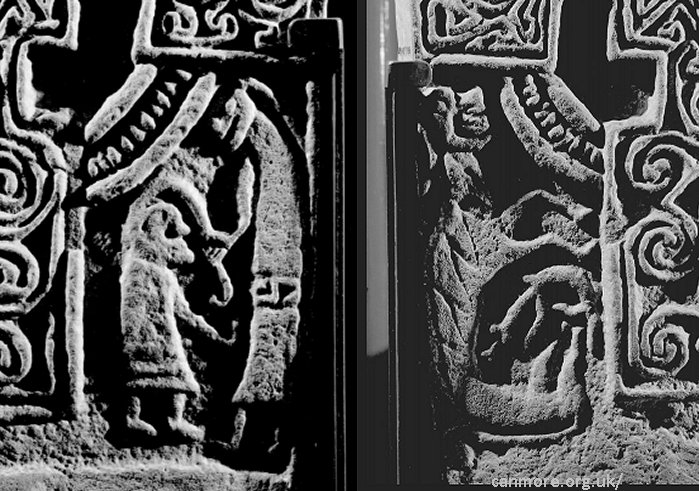
Pictish Carved Stone. The slab has a character of its own and many interesting details. It is carved in relief on both sides with the occasional use of incision. Evidence for discovery: found in 1849 in Inchbrayock graveyard and donated to Montrose Museum in 1859.. 'Image credit: Canmore
A large crocodile seen from above with bulbous eyes and two smaller crocodiles stretch along the right edge of the slab, one seen again from above with bulbous eyes and the other biting the tail of a donkey foal. There is another foal being harassed by a hound across the middle of the slab. Between the foals stands a man armed with spear, circular shield and sword, riding an adult donkey.
At the foot of the slab on the left is a cleric in a cowled cloak being menaced by a man wearing a tunic and sword, with a curiously wrought club raised in his right hand.
At the bottom there are two figure that have been interpreted as Mary and her child.
The Inchbrayock Stone is an excellent example of how the Picts used a variety of symbols to convey important messages. The stone was donated to Montrose Museum, Angus where is it currently kept.
To avoid confusion, it’s worth mentioning that there is another Samson Stone in Scotland. It goes by the name Samson’s Putting Stone. It’s a giant rock that stands on the summit of one of the eminences of Bochastle, a couple of miles west of Callander.
According to ancient legends, this huge stone was thrown here by one of the Fingalian giants in ancient times. It was originally located upon Ben Ledi, nearly 3 miles northwest, and was one of several stones being thrown in a competition to see who was the strongest of the giants and Samson was the name of the one who threw this huge rock.
Samson Putting Stone has nothing to do with the Picts. The stone was most likely carried from the Glen Dochart region and left there when the ice retreated at the end of the last ice age.

Spanning more than 1.7 meters and weighing more than a ton, the Dandaleith Stone has odd carvings made by the Picts who lived in the north and east of Scotland hundreds of years ago. Credits: Aberdeenshire Council
Over the years, archaeologists have uncovered several intriguing stone created by the Picts, especially in northern and eastern Scotland, but it has not been possible to decipher the symbols and signs. Carved stones represent a unique legacy of the Picts. Many of them give evidence of advanced skills of artists; some of the stones with very complex decorative motifs depict Christian crosses and crescent or birds or animals, both real and mythical.
One of the most extraordinary Pictish stones is the Dandaleith Stone. Spanning more than 1.7 meters and weighing more than a ton, the Dandaleith Stone contains several undeciphered signs.
Written by – A. Sutherland - AncientPages.com Senior Staff Writer
Copyright © AncientPages.com All rights reserved. This material may not be published, broadcast, rewritten or redistributed in whole or part without the express written permission of AncientPages.com
Expand for referencesMore From Ancient Pages
-
 One Of The Biggest Gold Treasures Ever Discovered In Denmark Is 1,500-Year-Old
Archaeology | Sep 6, 2021
One Of The Biggest Gold Treasures Ever Discovered In Denmark Is 1,500-Year-Old
Archaeology | Sep 6, 2021 -
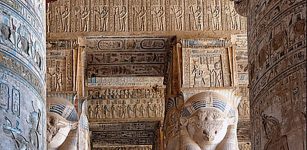 Egypt’s Dendera Temple: Second Restoration Phase Is Now Completed
Archaeology | Mar 6, 2021
Egypt’s Dendera Temple: Second Restoration Phase Is Now Completed
Archaeology | Mar 6, 2021 -
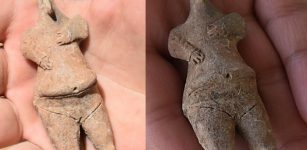 7,800-Year-Old Clay Female Figurine Unearthed In Ulucak Mound, Turkey’s Izmir
Archaeology | Aug 17, 2022
7,800-Year-Old Clay Female Figurine Unearthed In Ulucak Mound, Turkey’s Izmir
Archaeology | Aug 17, 2022 -
 Early European Farmers Traced To Anatolia, DNA Study Shows
Archaeology | Jan 5, 2016
Early European Farmers Traced To Anatolia, DNA Study Shows
Archaeology | Jan 5, 2016 -
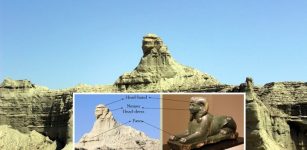 Mysterious Balochistan Sphinx Has An Ancient Story To Tell – But Is An Advanced Ancient Civilization Or Mother Nature Hiding Behind The Story?
Featured Stories | Feb 3, 2018
Mysterious Balochistan Sphinx Has An Ancient Story To Tell – But Is An Advanced Ancient Civilization Or Mother Nature Hiding Behind The Story?
Featured Stories | Feb 3, 2018 -
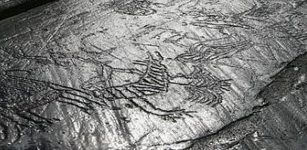 Ausevik Rock Art: Real And Mythical World Of Stone Age People Of Norway
Civilizations | Oct 2, 2018
Ausevik Rock Art: Real And Mythical World Of Stone Age People Of Norway
Civilizations | Oct 2, 2018 -
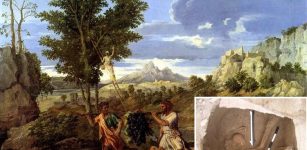 Mysterious Biblical Canaanites – What Ancient DNA Reveals About Their Fate
Archaeology | Jul 28, 2017
Mysterious Biblical Canaanites – What Ancient DNA Reveals About Their Fate
Archaeology | Jul 28, 2017 -
 Why Was Pharaoh Khafre Almost Wiped Out From Historical Records?
Featured Stories | Feb 19, 2020
Why Was Pharaoh Khafre Almost Wiped Out From Historical Records?
Featured Stories | Feb 19, 2020 -
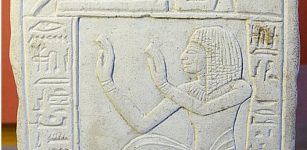 Meretseger: Theban Cobra Goddess Who Presided Over The Valley of The Kings
Egyptian Mythology | Jul 10, 2021
Meretseger: Theban Cobra Goddess Who Presided Over The Valley of The Kings
Egyptian Mythology | Jul 10, 2021 -
 Ice Age Mystery – Unexplained Disappearance Of North America’s Large Mammals – New Clues
Fossils | Jun 1, 2024
Ice Age Mystery – Unexplained Disappearance Of North America’s Large Mammals – New Clues
Fossils | Jun 1, 2024 -
 Can King Ashurbanipal’s Strange Clay Tablet Unravel The Mystery Of The Lunar Kings
Ancient Mysteries | Nov 9, 2021
Can King Ashurbanipal’s Strange Clay Tablet Unravel The Mystery Of The Lunar Kings
Ancient Mysteries | Nov 9, 2021 -
 Meaning Of Ancient Hand Signs We Still Use Today
Ancient History Facts | Apr 22, 2021
Meaning Of Ancient Hand Signs We Still Use Today
Ancient History Facts | Apr 22, 2021 -
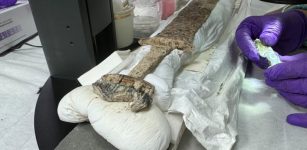 Spectacular 6th Century Sword With Runes Found In Anglo-Saxon Grave Near Canterbury In Kent
Archaeology | Dec 27, 2024
Spectacular 6th Century Sword With Runes Found In Anglo-Saxon Grave Near Canterbury In Kent
Archaeology | Dec 27, 2024 -
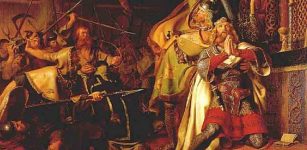 Thousand-Year-Old Sarcophagus Discovered In Odense
News | Sep 28, 2015
Thousand-Year-Old Sarcophagus Discovered In Odense
News | Sep 28, 2015 -
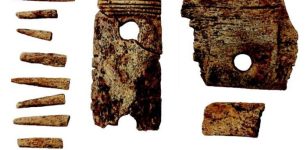 Large Anglo-Saxon Burial With Bodies And Roman Artifacts Found At Bicker Fen, Lincolnshire, UK
Archaeology | Aug 14, 2023
Large Anglo-Saxon Burial With Bodies And Roman Artifacts Found At Bicker Fen, Lincolnshire, UK
Archaeology | Aug 14, 2023 -
 Identity Of The Shining Ones – One Of The Greatest Secrets Ever Kept From Mankind
Ancient Mysteries | Aug 9, 2018
Identity Of The Shining Ones – One Of The Greatest Secrets Ever Kept From Mankind
Ancient Mysteries | Aug 9, 2018 -
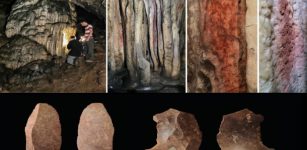 Cueva de Ardales – Rock Art Cave In Spain Was Used By Ancient Humans For More Than 50,000 Years
Archaeology | Jun 1, 2022
Cueva de Ardales – Rock Art Cave In Spain Was Used By Ancient Humans For More Than 50,000 Years
Archaeology | Jun 1, 2022 -
 Old Sword Decorated With Inscription And Related To 1173 Battle Of Fornham – Unearthed
Archaeology | Apr 8, 2017
Old Sword Decorated With Inscription And Related To 1173 Battle Of Fornham – Unearthed
Archaeology | Apr 8, 2017 -
 On This Day In History: Naval Battle Of Porto Bello Begins – On Nov 20, 1739
Featured Stories | Nov 20, 2016
On This Day In History: Naval Battle Of Porto Bello Begins – On Nov 20, 1739
Featured Stories | Nov 20, 2016 -
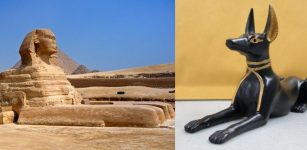 What Was The Sphinx And What Is Wrong With Its Body And Head?
Civilizations | Apr 6, 2017
What Was The Sphinx And What Is Wrong With Its Body And Head?
Civilizations | Apr 6, 2017

